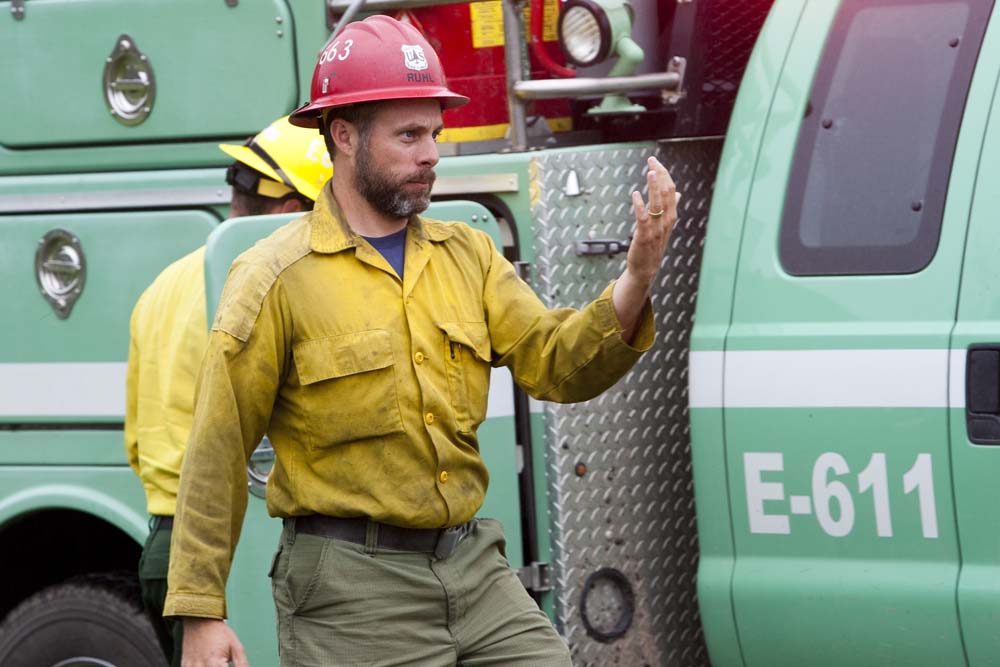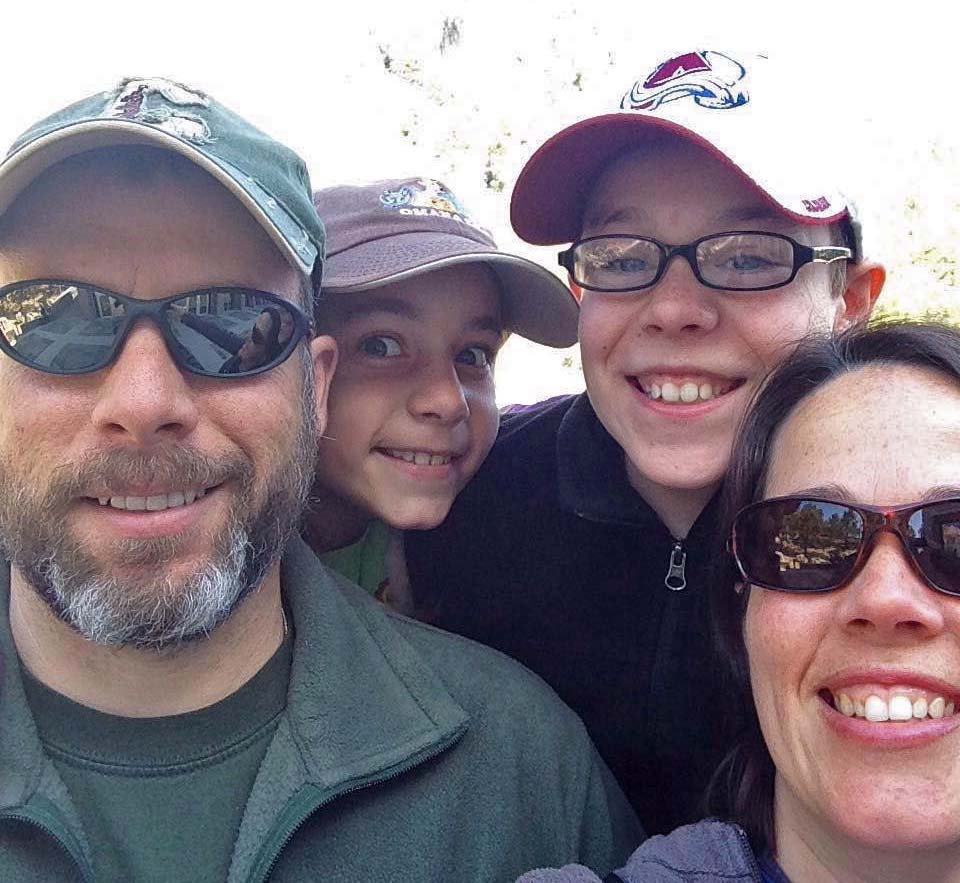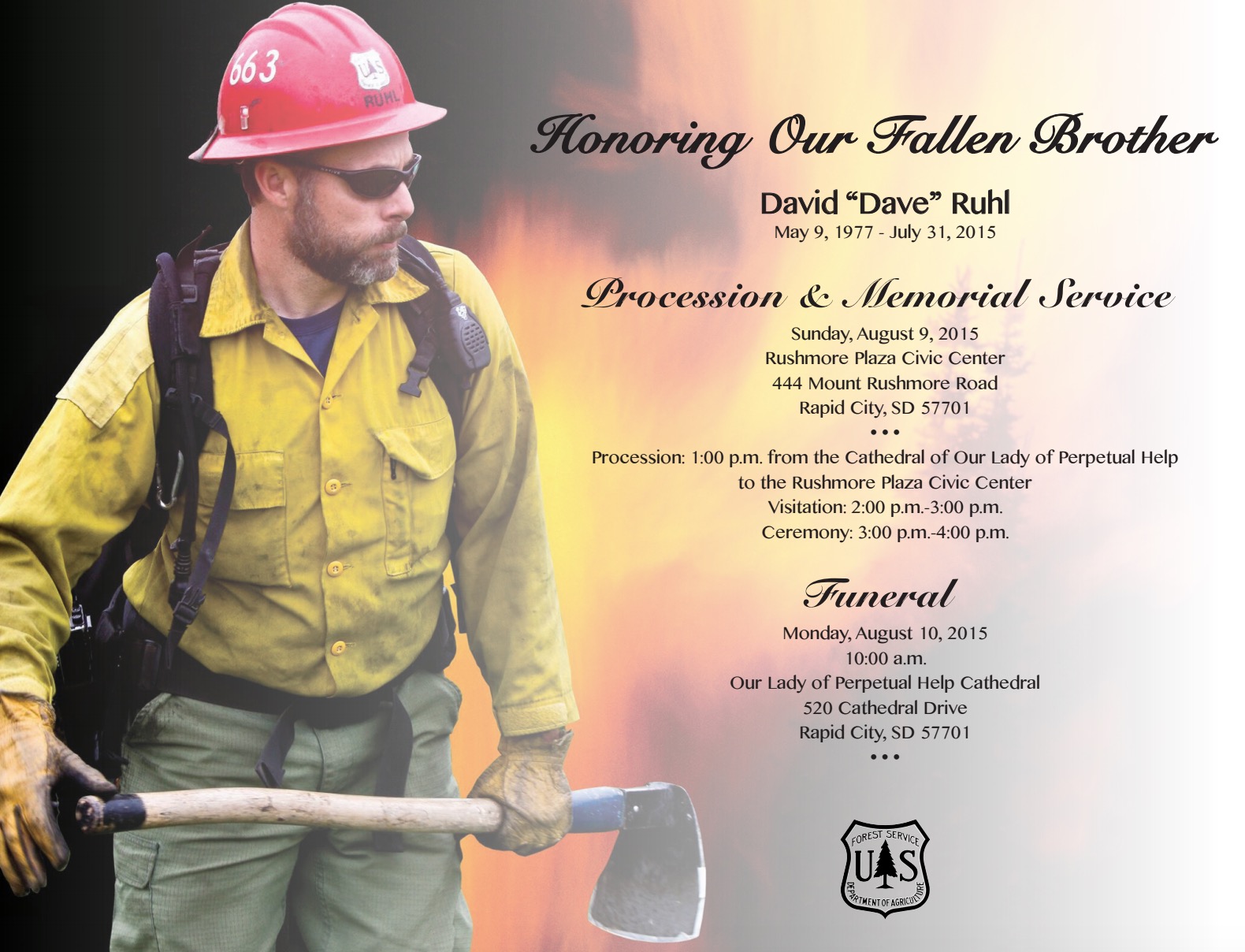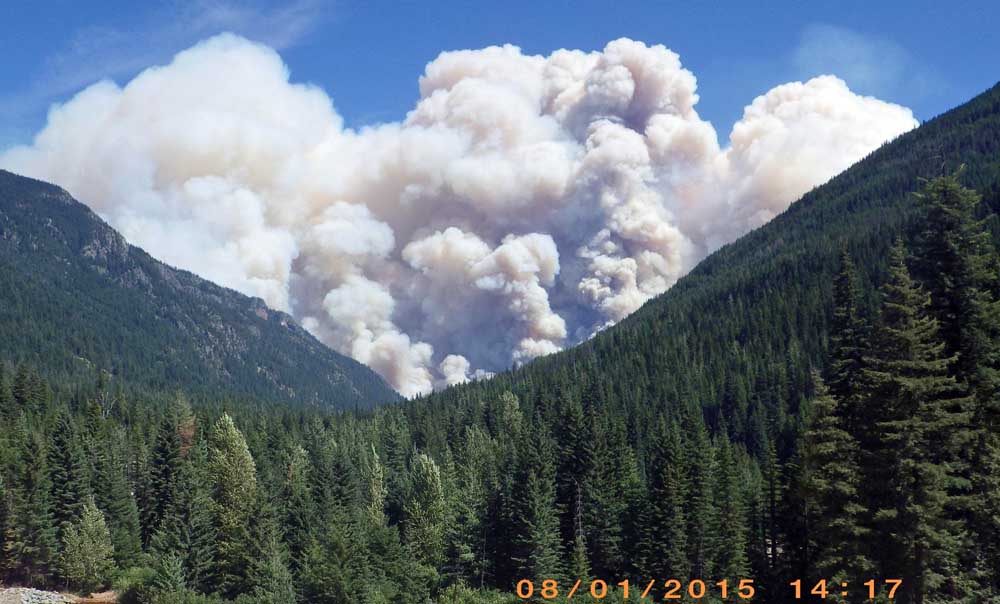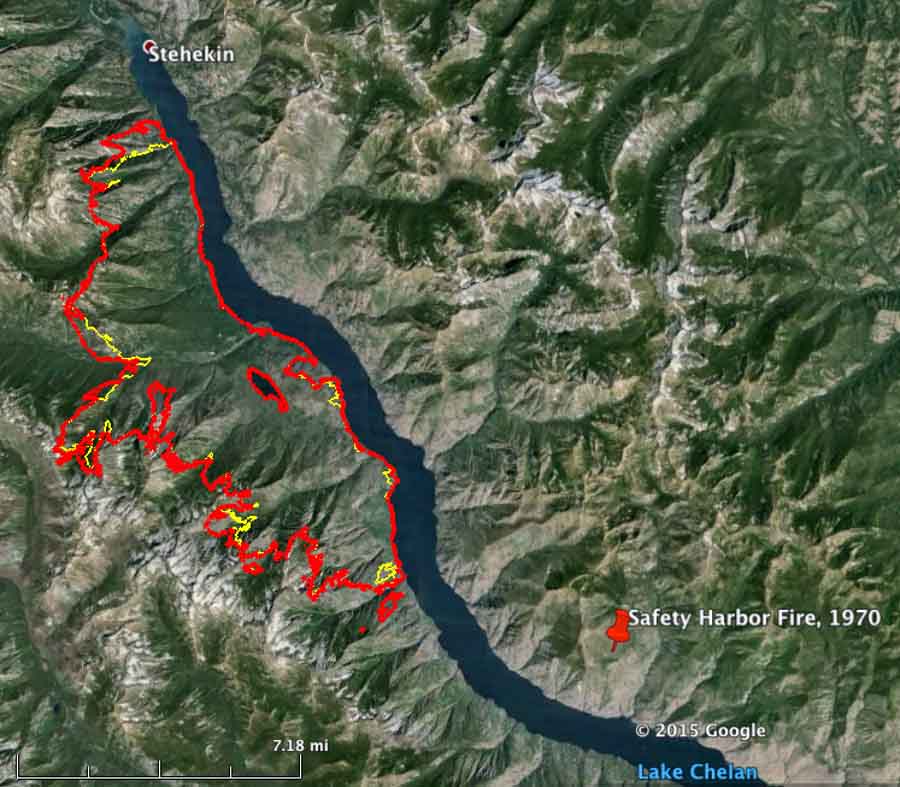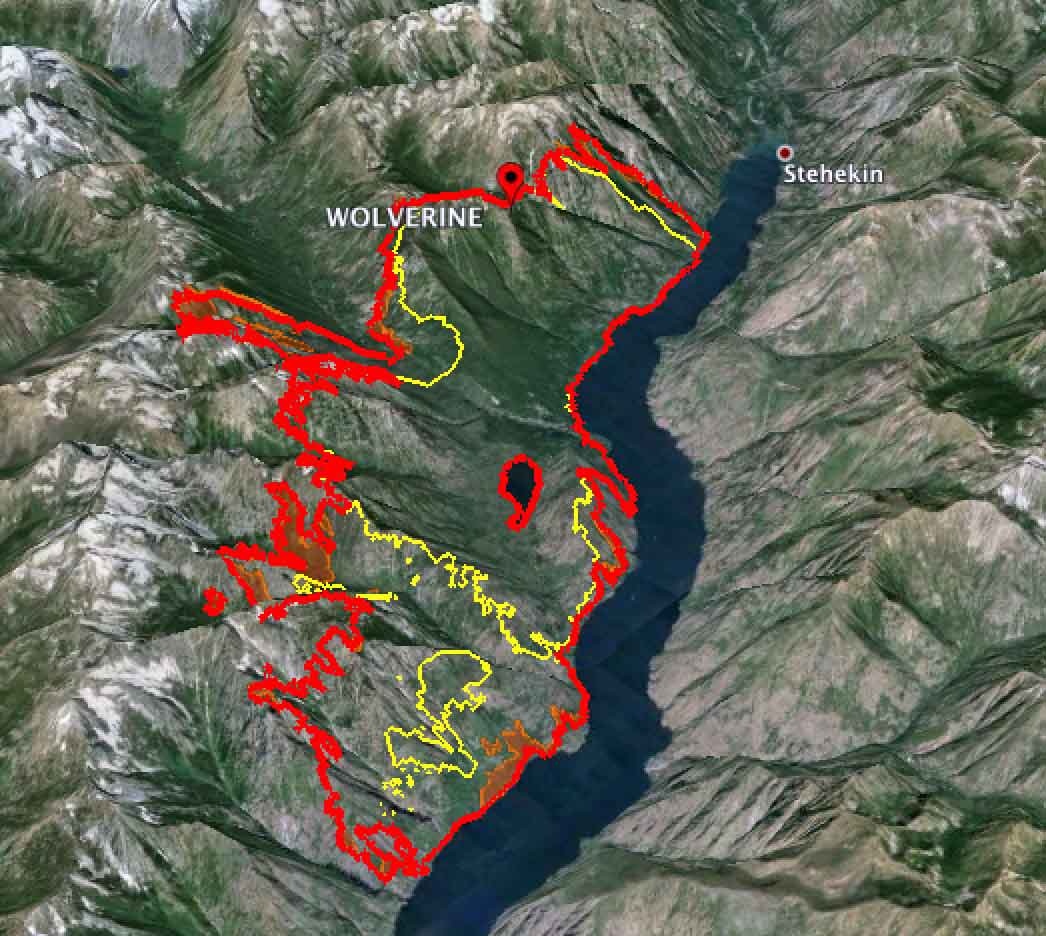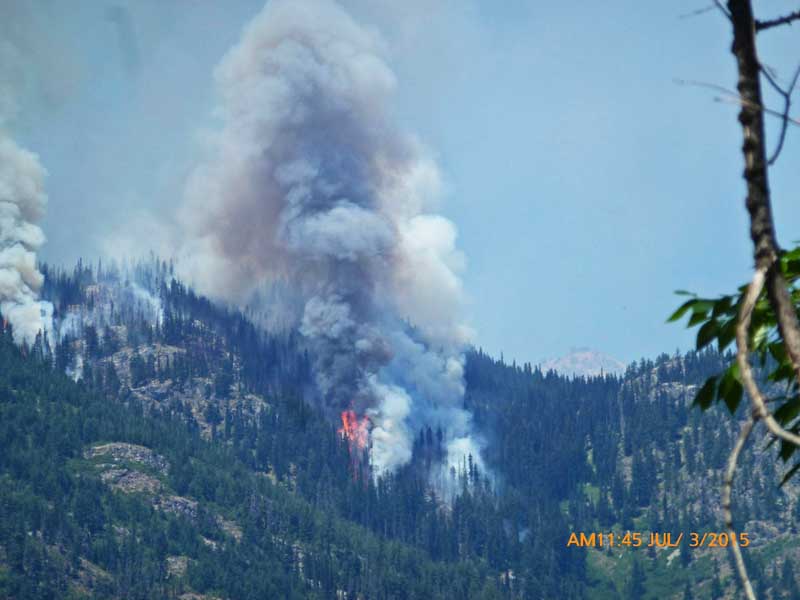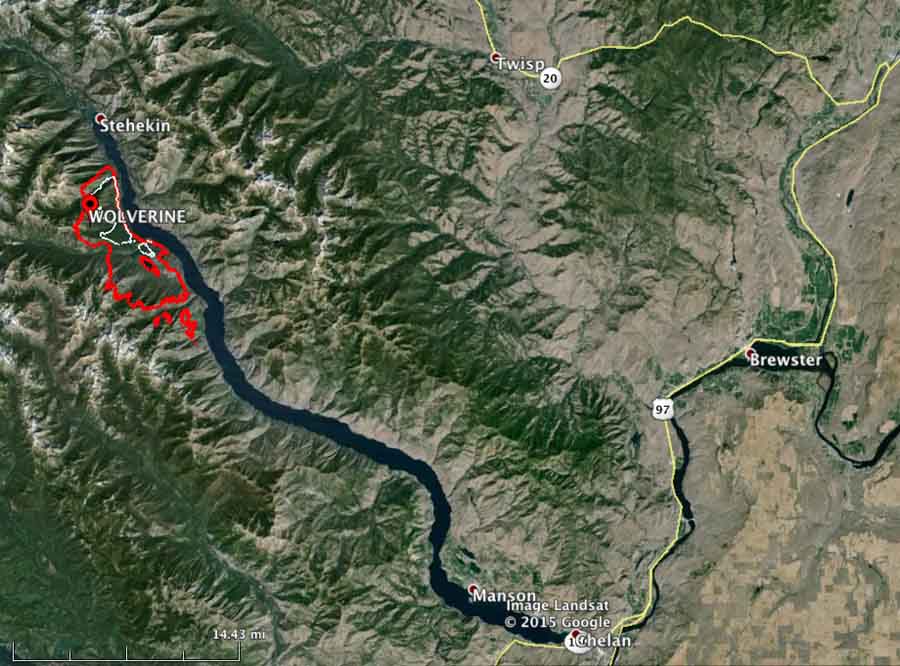(UPDATE at 7:21 a.m. PT, August 8, 2015)
The Rocky Fire east of Clearlake, California, was quiet again on Friday. The satellite did not detect any large heat sources on the blaze that CAL FIRE is calling 69,636 acres and 62 percent contained. Many areas have been repopulated but others are still under mandatory evacuation orders.
Almost 3,000 personnel are assigned to the fire, as well as 195 engines and 84 hand crews.
****
(UPDATE at 9:47 p.m. PT, August 5, 2015)
Firefighters on the Rocky Fire east of Clearlake, California had another successful day — for the second day in a row keeping the additional acres burned to less than 100. A mapping flight at 7 p.m. Wednesday determined that 37 acres were added, bringing the total to 68,924.
Today CAL FIRE updated the number of structures destroyed to 43 residences and 53 outbuildings.
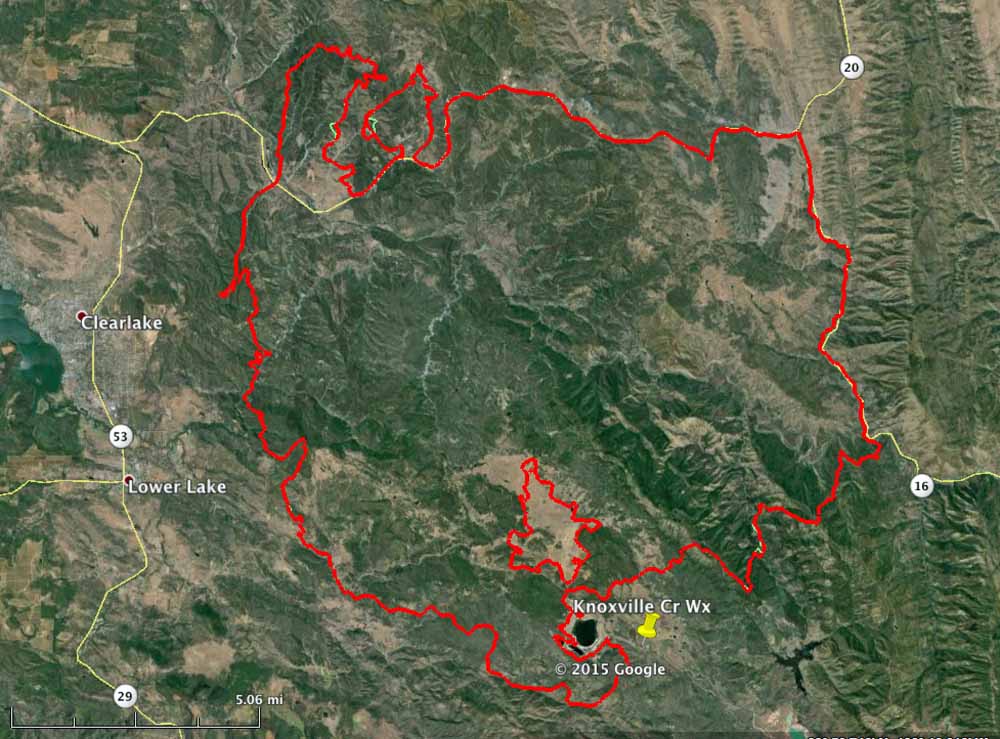
The mapping flight was earlier than usual, perhaps because one of the two USFS infrared (IR) line scanning aircraft is down for major planned maintenance, leaving a large workload for the single remaining IR ship operated by the US Forest Service. It’s an inopportune time for planned maintenance that sometimes must be done with a certain number of hours on the aircraft. But thankfully the ship carrying the load is a twin-engine jet-powered Cessna Citation that cruises at over 450 mph so it can visit many fires during its shift.
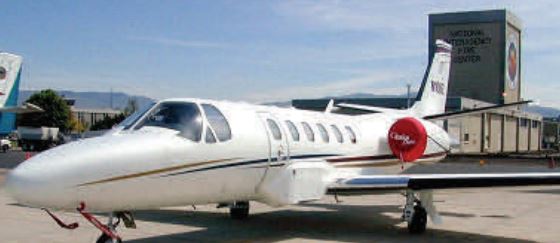
The jet’s daily grand tour of wildfires is usually at night because there is more of a difference between the temperatures of the ground and the fire, making it easier for the fire to be detected. Just one quick pass is all that’s required of a fire that’s up to several thousand acres — more are needed for very large blazes such as the complexes of scores of scattered fires burning in northern California on the Shasta-Trinity National Forest that are scanned as one large “box”, requiring six passes on a recent night.
But back to the Rocky Fire. The weather conditions on Wednesday were warmer and drier than the day before, but they were not extreme; lets call them moderate, at least for California. And about the same is in the forecast for Thursday. Firefighters deserve kudos for limiting the spread to much, much less that we were seeing several days ago.
On the map of the fire above, only a few changes in the perimeter can be picked out (if you click on the map to enlarge it). Two are on the north side where the fire jumped across Highway 20. The other is on the southeast side.
The resources assigned to the fire include 3,483 personnel, 323 engines, 87 hand crews, 17 helicopters, and 63 dozers.
****
(The article below was originally published at 10:24 a.m. PT, August 5, 2015)
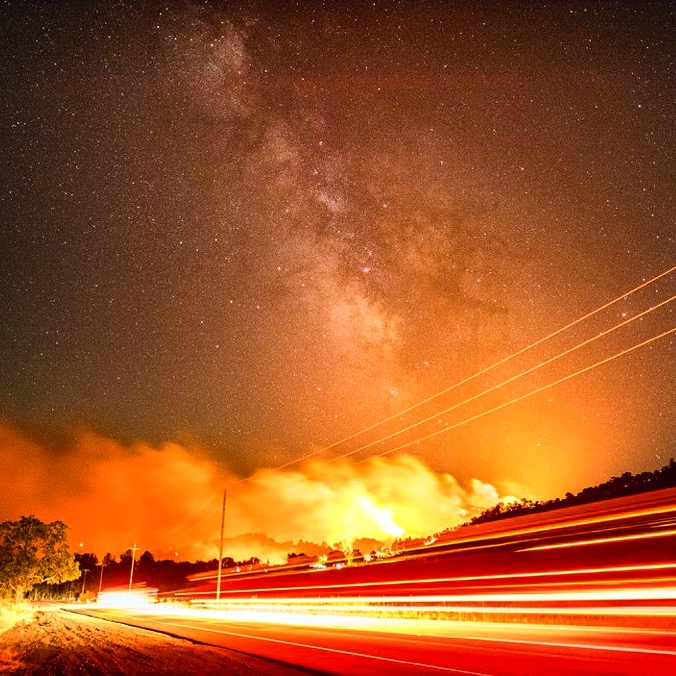
On Tuesday firefighters got a temporary break from extreme weather and fire behavior on the Rocky Fire east of Clearlake, California. A small amount of rain was reported in some areas of the fire, however the Knoxville Creek weather station on the southeast side did not record any precipitation.
The fire perimeter is still virtually the same as was shown on the map we posted August 4.
There was very little additional growth of the Rocky Fire Tuesday. A total of 76 acres were added, which occurred on the north side where it spotted across Highway 20, and on the southeast side west of Highway 16. A mapping flight at 10 p.m. Tuesday updated the size to 68,886 acres.
CAL FIRE updated the number of structures destroyed to 39 residences and 52 outbuildings. They caution that the numbers may increase as damage assessment teams are able to access the burned areas.
Mandatory evacuations are still in effect for many areas, affecting about 13,000 residents. Other areas are under evacuation advisories.
The high temperature of 75 degrees Tuesday occurred at 10 a.m. and it actually dropped to 69 at 3 p.m. thanks to clouds that moved in. The relative humidity increased to 58 percent at 3 p.m. and then decreased as the sky cleared somewhat.
Conditions will change on Wednesday as the forecast predicts 89 degrees, 24 percent relative humidity, clear skies, and winds out of the east at 3 to 6 mph.



